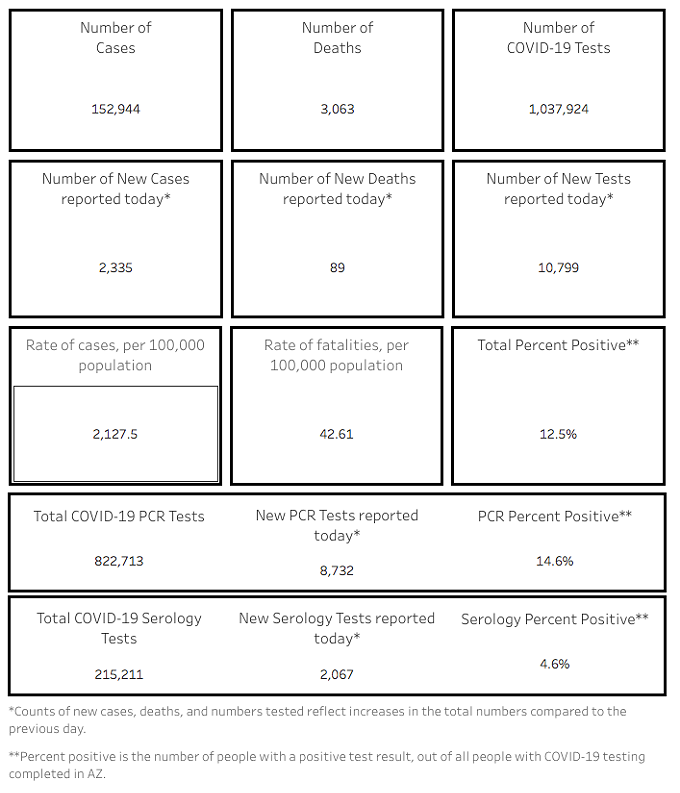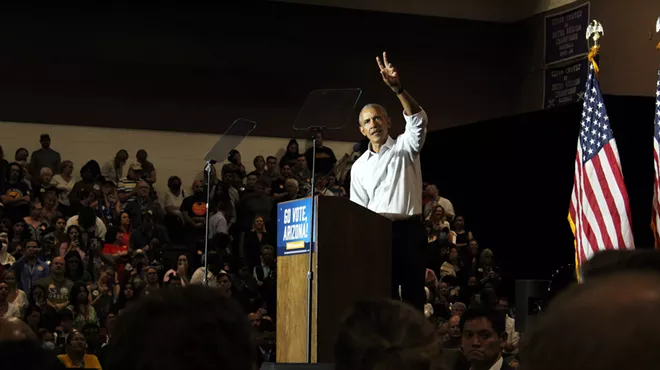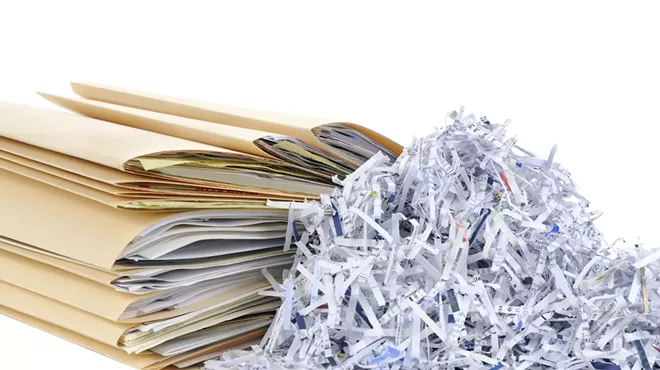Thursday, July 23, 2020
Your Southern AZ COVID-19 AM Roundup for Thursday, July 23: Total Number of Cases Closes in 153K; Death Toll Tops 3K; Hospitalizations Trend Downward; Ducey Expected To Make School Announcement Today; UA Offering More Antibody Testing
In today's coronavirus news: AZ closes in on 153K cases … Death toll tops 3,000 … hospitalizations are trending downward as Arizonans embrace masks … Gov. Doug Ducey is expected to let Arizonans know what's up with schools today … UA expands antibody testing … and more details below.
The total number of confirmed coronavirus cases in Arizona closed in on 153,000 as of Thursday, July 22, after the state reported 2,335 new cases this morning, according to the Arizona Department of Health Services.
Pima County had seen 14,143 of the state's 152,944 confirmed cases.
The death toll topped 3,000 today after the state reported an additional 89 deaths. A total of 3,063 people have died after contracting the virus, including 405 in Pima County.
Maricopa County had 102,247 of the state's cases.
Hospitals remain under pressure, although they report in slight decrease in the number of Arizonans hospitalized with COVID-19-related symptoms. The report shows that 2,966 COVID patients were hospitalized yesterday in the state, down from a peak of 3,517 on July 13. That's the lowest it's been since July 1, where 2,938 people where hospitalized with COVID complications.
A total of 1,327 people visited ERs yesterday with COVID symptoms.That number peaked at 2,008 on July 7.
A total of 851 COVID-19 patients were in ICU beds yesterday, the lowest that number has been since July 5, when 839 COVID patients were in ICU. The number of COVID patients in ICUs peaked at 970 on July 13.
SCHOOL ANNOUNCEMENT EXPECTED TODAY
Gov. Doug Ducey is expected to address the question of reopening school and universities at his usual Thursday press conference today. Ducey said at last week’s press conference that he was in conversations with school leaders and university presidents about the best way to move forward with the school year. Many school officials are anticipating an announcement this week from Ducey regarding a further delay in starting the school year.
While Arizona schools are tentatively scheduled to open on Aug. 17 (with some districts starting online programs sooner), Ducey said he would be meeting with Arizona Superintendent of Public Instruction Kathy Hoffman and other state educational stakeholders in hopes of providing more complete information on the game plan for reopening schools.
“I know people want clarity around this and we’re going to provide clarity,” Ducey said. “I’m going to tell you our kids are going to be learning in the fall.”
Hoffman said this week that instead of picking a date to reopen schools, Ducey should instead use metrics regarding the spread of the virus.
“School leaders should be empowered to work with local public health officials to examine data and determine when it’s safe to reopen for in-person learning, rather than relying solely on dates,” Hoffman said in a prepared statement. “Metrics, including but not limited to those listed below, will provide communities with clear targets for mitigating COVID-19.”
Those metrics should include a downward trajectory of confirmed new cases, a decrease in positivity rates in testing and widespread availability of tests, Hoffman said.
She added that Ducey should guarantee full funding for distance learning programs, which districts have been assembling in one form or another since March.
“Whether their school buildings are safe to reopen or not, schools need flexibility and budget stability for students and educators to succeed in the upcoming year,” Hoffman said. “Many public schools have already invested considerably in technology, online learning platforms, and other tools needed during distance learning. Students need access to services that support their well-being and academic success across multiple scenarios and conditions during a pandemic.”
Some public health experts say that community transmission is too widespread to safely open the schools as planned. Will Humble, executive director of the Arizona Public Health Association, recently warned that while states that have taken more aggressive steps earlier to slow the spread of the virus will be able to reopen schools, he can’t see the same thing happening in Arizona because of the state of community spread.
Humble, who headed up the Arizona Department of Health Services in the administration of former Gov. Jan Brewer, said there are two main factors to consider when opening schools in the fall: mitigation measures alongside the level of community spread within a school district.
“Because we have the level of community spread that we have, I just don’t see that mitigation measures, which help but don’t eliminate transmission, are going to be adequate to make it a safe environment for teachers and schools and families,” Humble said.
The state needs a much lower percentage of positive tests and much more hospital capacity before schools can safely reopen, Humble said.
Local school districts are planning a mix of "distance learning" online instruction and in-school instruction when school starts next month. Unlike in spring, when schools moved online following spring break, districts are planning stricter instructional time designed to mirror traditional in-person classes.
Tucson Unified School District will launch online classes for all students starting Aug. 10 but in order to avoid losing state funding, schools will open on Aug. 17 for any student who wants to attend class in person. However, students will be in "learning spaces" where they will do the same distance learning program that students who remain home will experience. Teachers may or may not be in the classroom, which may instead include a monitor to keep an eye on the students who are in the room. All TUSD families will receive laptops.
Other local school districts have announced a mix of online and in-person options but say they will be ready to go to online-only if Ducey delays the start of the school year once again.
COVID’S SPREAD MAY BE ON DECLINE
Citing a drop in the total number of cases on a week-to-week basis, Gov. Doug Ducey said last week that mask-wearing and steps to reduce the interaction of people in large groups had resulted in some positive signs regarding the spread of the virus.
But Ducey warned the state still had a long road ahead in the fight against COVID-19.
"I want people to get their heads around this," Ducey said. "There's no end in sight today."
Figures from Pima County show that on a week-by-week basis, cases here may have also peaked in the week ending June 27, with new cases reaching 2,300. Pima County Administrator Chuck Huckelberry noted that the two subsequent weeks could still be adjusted upwards, but during the week ending July 4, 2,092 cases were reported. However, Huckelberry noted that the week ending July 4, the county saw a peak of 37 deaths, up from 18 the previous week.
While coronavirus cases may be on a slight downward trend in the state, Ducey urged Arizonans to stay vigilant by staying at home and wearing masks while practicing social distancing when out in public to continue the fight against the virus.
"There will be no victory laps," said Ducey, who praised measures set by local authorities to require masks were helping to reduce spread, but once again stopped short of a statewide mandate.
Arizona Senate Democrats released a joint statement following Ducey's press conference urging him to enact a statewide mask mandate, implement more contact tracing and provide more PPE for hospitals and schools.
"We are disappointed again that the Governor refuses to take stronger actions to curb the spread of the deadly COVID-19 virus," the lawmakers wrote. "More aggressive action is needed now to safely open schools in the future no matter what date is picked. Senate Democrats again urge the Governor to take swift and preventative action. Time is not an ally. Act now, Governor to curtail the spread. Lives, not just livelihoods, are at stake."
DUCEY ASKS FEDS TO EXTEND UNEMPLOYMENT BENEFITS
As Senate Republicans and the Trump White House attempt to assemble a new federal aid package, Ducey this week asked Arizona's congressional delegation to consider a number of provisions to help Arizona in the latest coronavirus package, including an extension of the extra $600 a week in Federal Pandemic Unemployment Compensation that out-of-work Arizonans are receiving. Those additional dollars are set to run out later this month.
"We understand the concerns from businesses that are having difficulty rehiring employees when the government pays more in unemployment benefits compared to what they were paying their former employees before the pandemic," Ducey wrote. "We are advocating that, at a minimum, individuals who continue to be impacted by the COVID-19 pandemic, be eligible to receive at least 100% of their weekly earnings that they were making prior to government intervention in their employers’ ability to stay open. It is by no fault of their own that certain businesses have a higher risk of transmission of COVID-19 and therefore are being required to close by the government, and we would advocate that those individuals continue to have extra support from the FPUC."
Ducey also asked the federal government to provide more money to Arizona's unemployment insurance fund; extend the December deadline for the state's tribes to spend their pandemic aid dollars; more funding for a program that helps low-income Arizonans pay utility bills that climb in the summer thanks to triple-digit temperatures; and special liability protection to shield healthcare workers, businesses and schools from lawsuits related to COVID-19.
MORE COVID-19 AND ANTIBODY TESTING AVAILABLE
With Arizona's COVID-19 cases now topping 150,000, the University of Arizona and the State of Arizona have expanded their free COVID-19 antibody testing program to include 15 new categories of essential workers considered at high risk for exposure. The antibody test, developed by researchers at UA Health Sciences, determines who has been exposed to and developed an immune response against COVID-19.
In addition to healthcare workers and first responders, the following workers are eligible for antibody testing:
-Educators
-Child care workers
-Agriculture, grocery and food service workers
-Hospitality employees
-Solid waste collection workers
-Transportation services workers
-Members of the National Guard
More information and registration for the test is available at covid19antibodytesting.arizona.edu.
Along with the expanded testing, UA is also launching a $7.7 million yearlong study funded by the CDC to identify "patterns of COVID-19 immunity over time in previously and newly infected individuals." The research team is seeking 4,000 health care workers, first responders and other frontline workers as participants in the study, who will participate in weekly COVID-19 surveillance and quarterly antibody testing.
Pima County is now running a free COVID-19 testing site at Kino Event Center. You can register for a test here.
The testing and lab costs are estimated to reach $30 million to $40 million, which will come out of the county's portion of the federal CARES Act.
Pima County has also contracted with Maximus Health & Services, Inc. to boost contact tracing efforts in the region. Maximus is an outsourcing company that provides business support to government health agencies such as the Pima County Health Department. They will hire about 150 local residents to perform “extensive” contact tracing as directed by the health department, in order to “alert, educate and isolate” individuals who have come in close contact with a person who is COVID-19 positive. This partnership will dramatically expand its current contact tracing system, at a time when Arizona is experiencing a rapid increase in COVID-19 cases.
“One of the key components of our response to this outbreak that has been difficult to ramp us has been the hours and hours of people power it takes to do this type of work and the systems it takes to support that staff,” said Health Department Director Dr. Theresa Cullen in a statement. “We look forward to being able to quickly take advantage of the experience, capacity, and planning Maximus will be able to provide.”
Pima County will pay $10 million to Maximus for a six-month contract, which has “multiple extension options” in three-month increments that will allow the county to reduce or expand the scope of the contact tracing system as needed.














